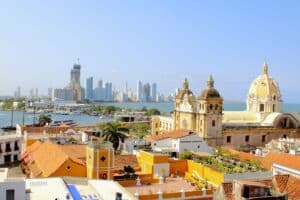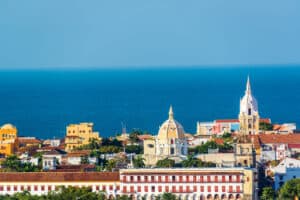It’s true—Colombia is becoming a hotspot for tourists, with a record-breaking 5.8 million visitors in 2023. CNN even named it one of the “Best Destinations to Visit,” and the star of our article, Cali, got a special mention from Forbes as a top place to visit.
Now, Cali isn’t just any city—it’s the salsa capital of Colombia! CNN even says salsa dancing here is a must-do experience. In this article, we’ve got another item to add to your Cali to-do list: street smarts—as Cali can be a safe destination to visit, but only if you’re careful. Let’s learn more.
Is Cali Safe to Visit?
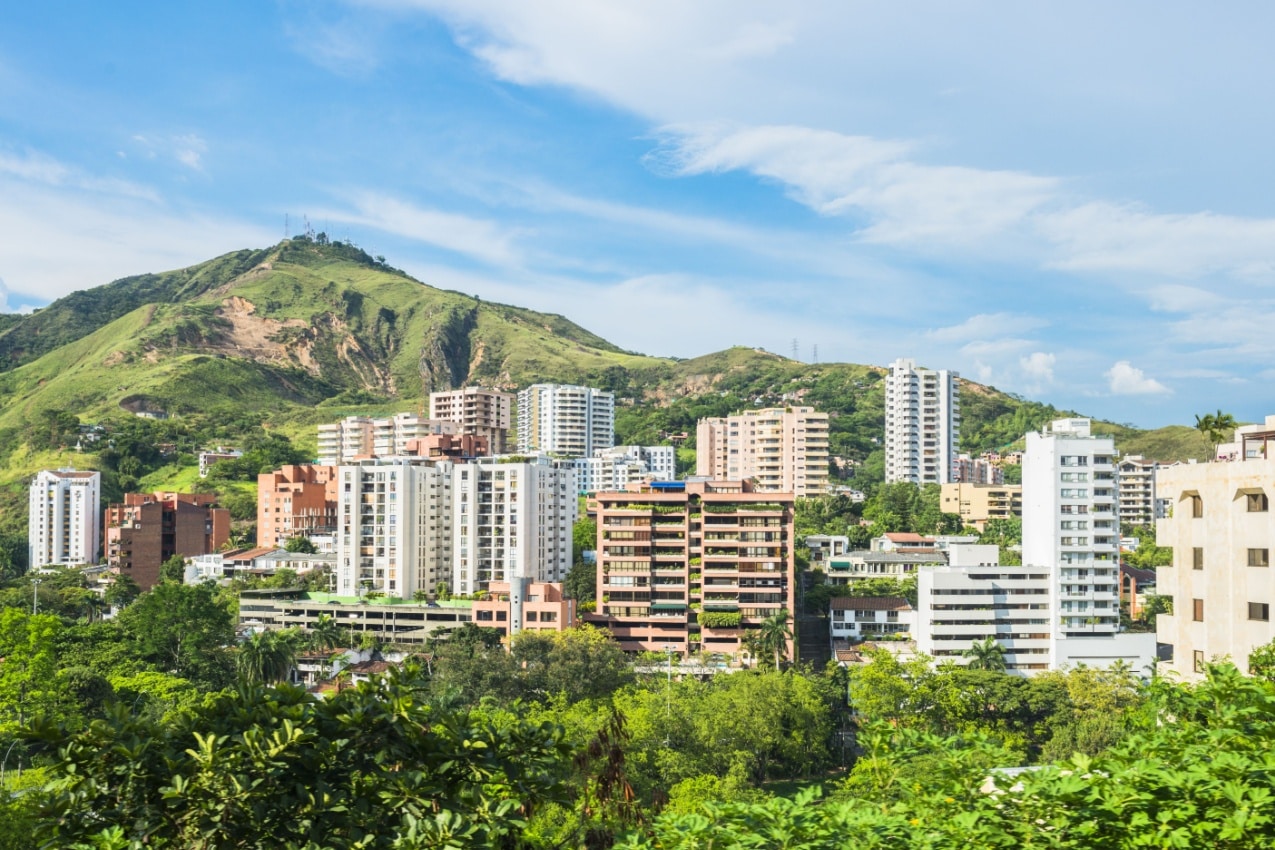
Yes, but not entirely.
Cali was once the base of operations for the Rodriguez brothers and their Cali Cartel, which was among the most powerful in the country.
But things have changed since then. Once the Rodriguez brothers got locked up for their crimes and put away for 30 years, the situation started to improve. Crime rates began to drop, improving the quality of life.
So, does this mean that you’re gonna get jumped on every street corner? Certainly not—but petty theft is still a big issue. And if you wander into the wrong part of town, you might as well stick a sign on your back saying “rob me.”
- International travel advisories: Level 2—visit with a high degree of caution
- Crime rating: 71.73—moderate, towards high
- Most common crime: Violent crimes, cybercrime, and theft
- Most low-crime municipalities: Comunas 1, 2, 4, 5, 6, 8, 10, 11, 16, 17, 18, 19, and 22
- Most high-crime municipalities: Comunas 3, 9, 13, 14, 15, 20, and 21
- Public transportation safety: Reliable, but be wary of pickpockets
- Road safety: Some roads are challenging to drive on, and some locals are known to drive very recklessly
- Safety walking alone during the day: Moderately safe
- Safety walking alone during the night: Highly unsafe
- Common natural disasters: Storms and earthquakes
- Carbon monoxide poisoning: Possible, carry a portable CO detector
- Police presence: Widespread, but may take longer to respond in case it deals with serious crimes
- Medical care quality: Good, but may be expensive if you don’t have a medical travel insurance
Travel Advisory for Colombia
The travel advisories of Canada, New Zealand, the UK, and Australia don’t discourage visiting Colombia, but they do urge tourists to exercise a “High Degree of Caution” (Level-2 safety category). The US advisory, on the other hand, is a bit more cautious, telling travelers to “Reconsider Travel” to Colombia (Level 3).
Violent crime is the main worry in Colombia, which has led to specific areas being flagged as no-go zones. But the good news is that Cali isn’t on that list!
That said, Colombia is still Colombia, so you have to be street-smart. According to the advisories, the main concerns in Cali are thefts and cybercrime—especially through online dating apps.
So—if you’re packing your bags to Cali, just be careful who you meet and keep your belongings close.
A Comprehensive Look at Cali Crime Rates
Cali’s crime rating sits at 71.73, which is moderate but approaching high. The big worries here are things like property crimes, drugs, and corruption. But when it comes to crimes tourists might actually face, like insults or physical attacks based on things like race or gender, the rates are low.
According to Columbia Reports, 75% of Cali’s residents don’t feel secure in their own city, but the level of wariness varies depending on where you are. In the Northwest and Northeast parts of Cali, locals feel the most secure, and that goes for tourists too. On the flip side, the South, East, and Aguablanca areas are where locals feel most at risk, so it’s best for tourists to avoid these areas.
Now, the following info might stress you out—Cali is ranked among the 40 most dangerous cities globally. However, it’s not all doom and gloom, because there are safe neighborhoods in Cali where violence is less common, such as:
- Comunas 1 and 2 in Northwest Cali
- Comunas 4, 5, 6, and 8 in Northeast Cali
- Comuna 10 (City’s center)
- Comunas 11, 16, 17, 18, 19, and 22 in East Cali
Stick to these areas if you visit this city!
On the flip side, areas like Comuna 3 and 9 in Central Cali, Comuna 20 in Southern Cali, and Comuna 13, 14, 15, and 21 in Aguablanca are THE crime spots and no place for a tourist to go.
| Safety Concerns | Crime Rate | Status |
| Overall Crime Level | 84.71 | Very High |
| Crime Increasing in the Past 3 Years | 75.62 | High |
| Home Break-Ins and Thefts | 60.95 | High |
| Mugging and Robbery | 82.17 | Very High |
| Car Theft | 69.01 | High |
| Theft from Vehicles | 73.16 | High |
| Personal Attacks | 62.50 | High |
| Verbal Insults | 51.32 | Moderate |
| Racial, Ethnic, Gender, or Religious-Based Attacks | 26.10 | Low |
| Drug Use and Dealing | 76.54 | High |
| Property Crimes (Vandalism and Theft) | 74.59 | High |
| Violent Crimes (Assault and Armed Robbery) | 84.79 | Very High |
| Corruption and Bribery | 88.38 | Very High |
| Safety Walking Alone in Daylight | 41.80 | Moderately Safe |
| Safety Walking Alone at Nighttime | 18.03 | Very Unsafe |
Source: Numbeo, 2024 data based on 123 contributors.
Personal Crime in Cali
According to Numbeo, personal crimes are somewhat common in Colombia, but whether you encounter them depends on where you are, the time of day, and how you carry yourself.
For instance, walking alone at night in Cali can be very risky. The nightlife scene can get hectic, potentially with criminals out and about. Also, Cali has some very dangerous areas where a great majority of the personal crimes happen the most—we mentioned them above—so make sure to avoid them.
If you’re traveling solo in Cali, especially as a woman, you might face some unwanted attention like wolf-whistling or catcalling. The key is not to respond to it, as engaging may give the wrong impression. Also, it’s best to avoid drinking too much, as it may limit your ability to make sound judgments regarding a situation or a stranger you meet.
Property Crime in Cali
Tourists usually carry more cash and valuables when they go on vacation, which is why they become targets for thefts and pickpocketing.
In Cali, pickpockets and thieves often operate on crowded buses and trains, as well as around cafes or bars, museums and popular attractions, and public ATMs.
Avoid standing out as a potential victim by not walking alone, especially at night. Leave expensive jewelry and large sums of cash at home, and use caution when using public ATMs. It’s safer to withdraw money from ATMs located in banks or malls where there’s a security presence.
Even in seemingly safe places like hotel lobbies, stay alert for opportunistic pickpockets who may take advantage of distractions, such as during check-in, when you leave your luggage on the side and concentrate on the paperwork.
Police Presence in Cali
If you ever find yourself in trouble in Cali, calling the police is your best option. However, be prepared for the fact that they might not arrive as quickly as you’d hoped. Sometimes, crime rates can affect their response times.
It’s important to be aware that there have been cases of fake police officerspretending to check for documents or money with the intention to rob. Corruption can also be an issue—in fact, a study found that 11% of people surveyed in Colombia had been asked for a bribe by police officers.
So it would be in your best interest to be a law-abiding tourist and practice increased caution so you won’t need any assistance from the police in the first place.
Public Transportation Safety in Cali
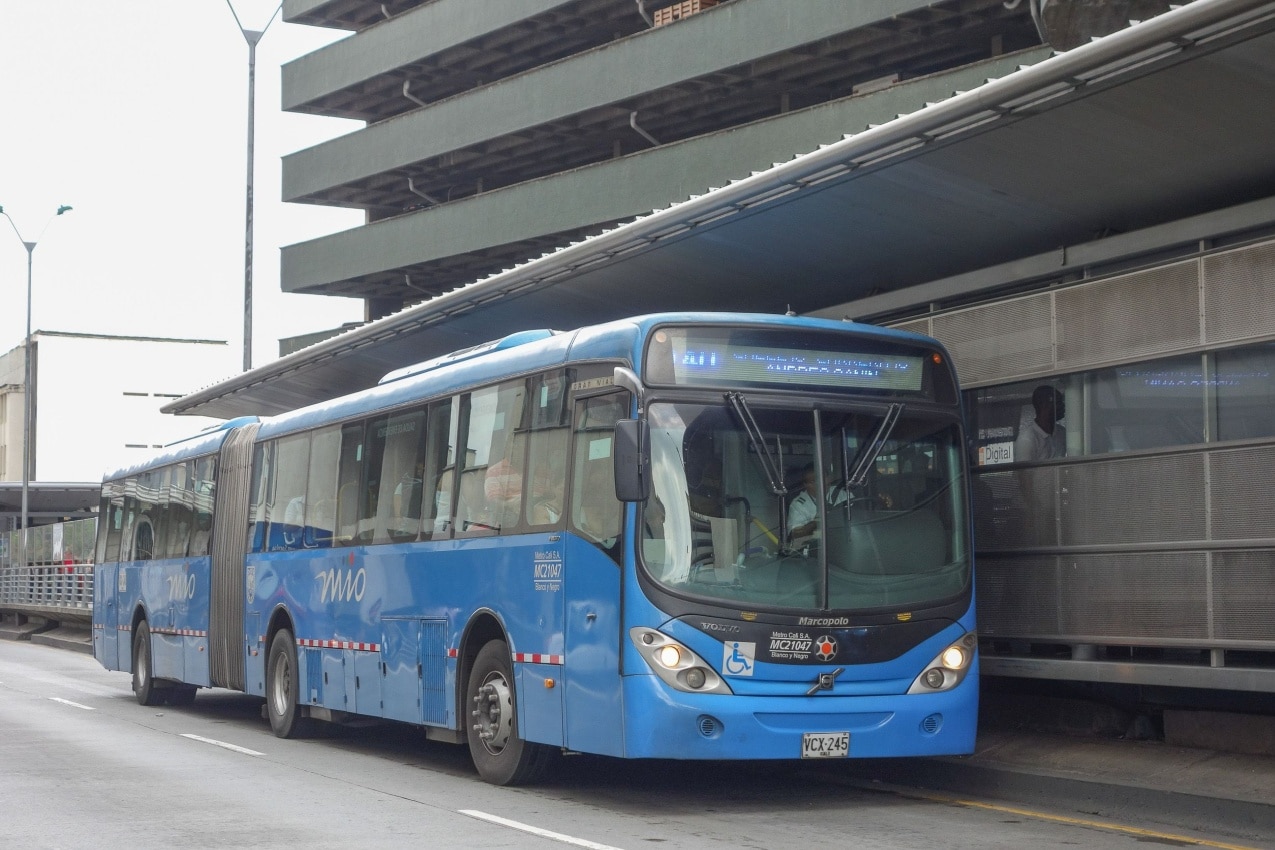
Public transport in Cali is usually reliable but is the hitpoint for thieves. To keep your stuff safe, use an anti-theft bag that’s hard for thieves to snatch, and don’t leave anything valuable in your pockets. And if you’re on a bus, it’s smart to keep the windows closed, so nobody can swipe your stuff from outside when the bus stops.
Taking a random taxi off the street isn’t the best idea. Some drivers might try to overcharge you, seeing you as an easy target. Instead, try the ride-sharing services Uber or InDriver. They’re safer and more reliable. InDriver is usually cheaper and more popular, but both apps will get you where you need to go safely.
Road Safety in Cali
When it comes to road safety in Cali, there are some things to keep in mind:
- Some road signs may be tough to spot or missing altogether.
- Lighting and guard rails might be lacking in certain areas.
- Watch out for livestock roaming on rural roads.
- During busy times, pedestrians might share the road.
- Local drivers can be pretty aggressive and reckless, leading to lots of accidents.
If you’re driving in Cali, here’s what to do:
- Stay off the roads at night if you can.
- Avoid secondary roads, as they’re sometimes targeted by criminals.
- Don’t pick up hitchhikers.
- Keep your doors locked and windows up.
- Hide your valuables under your seat.
- Bring along a cell phone.
- Opt for guarded parking spots when you’re in the city.
Medical Care Quality in Cali
When it comes to healthcare in Cali, you’ve got some good options, especially in the city itself.
Here are some of the best hospitals:
- Fundación Valle Del Lili
- Centro Médico Imbanaco De Cali S.A.
- Clínica De Occidente
- Clínica De Alta Complejidad Santa Bárbara S.A.S
- Clinica Farallones S A
- Hospital Universitario Del Valle Evaristo Garcia E.S.E.
You’ll also find plenty of pharmacies around, many of which are open 24/7 and offer affordable over-the-counter medications. Here are a few reputable ones:
It’s always a good idea to consider travel health insurance for peace of mind. Look into options like VisitorsCoverage, Insured Nomads, and SafetyWing to make sure you’re covered financially at your chosen healthcare facility.
Is It Safe to Travel Solo in Cali?
Traveling solo in Cali can be safe, but it’s essential to be cautious. Solo travelers can sometimes attract unwanted attention and be seen as easier targets for crimes.
If you’re exploring Cali alone, consider staying in social hostels where you can meet other travelers and explore the city together. There’s safety in numbers, and making friends along the way can enhance your experience. But remember, keep your wits about you—watch out for pickpockets, spiked drinks, intoxicated people (especially at night), and unlicensed taxis. While most locals are friendly, it pays to be on your toes, as not everyone may have your best interests at heart.
Perils of Nature: The Risk of Natural Disasters in Cali
Cali is susceptible to storms and earthquakes, but don’t worry—these are pretty rare and not life-threatening!
Storms
Cali tends to get the most rain in spring, particularly in April and during fall, especially in November. In these periods, storms can brew up, bringing heavy rainfall, strong winds, and sometimes flooding and landslides—a real domino effect of events.
In 2023, Cali dodged any major storms, but in 2022 and 2021, they wreaked havoc, causing flooding, landslides, and other damage like fallen trees and collapsed buildings.
Luckily, we’ve got weather reports to rely on so we can stay up-to-date and avoid getting caught in a storm. For the latest updates on upcoming storms, check out the National Weather Service.
Earthquakes
In Cali, big earthquakes are pretty rare. The last one that shook the area was a tiny 2.8-magnitude quake on March 24, 2024. There was another one a bit stronger, a 2.9 magnitude quake on March 15, but most people hardly noticed it.
Even though they’re rare, it’s smart to know what to do if the ground starts shaking:
- Drop to the ground to avoid getting knocked over
- Take cover under something sturdy to shield yourself from falling stuff
- Hold on until the shaking stops to avoid getting hurt
For the latest updates on earthquakes in Colombia, you can check out the VolcanoDiscovery website.
Beware the Silent Threat: Carbon Monoxide Poisoning in Cali
Carbon monoxide usually leaks from appliances that aren’t looked after properly or don’t have good ventilation. Without a detector to warn you, you might not even know you’re breathing it in, which can be really dangerous.
In Cali, there haven’t been any reports of carbon monoxide incidents. However, other cities in Colombia, like Medellín, have had incidents of carbon monoxide poisoning in hotels. It’s happened elsewhere in the world too, like in the Bahamas and Mexico City.
Accommodations aren’t required to install a CO detector yet, so to be on the safe side, think about bringing your own portable carbon monoxide detector when you travel. They’re simple gadgets that could save your life and are definitely worth having.
If you start experiencing headaches, dizziness, or nausea while you’re indoors, it could mean you’ve been exposed to carbon monoxide. If that happens, get out of there right away and get help from a doctor.
Cali Weather Patterns: What to Expect
Cali has a tropical climate, which means it’s warm and humid year-round.
Temperatures typically range from 66°F to 85°F (about 18.9°C to 29.4°C), rarely dropping below 64°F or rising above 89°F (about 17.8°C to 31.7°C).
The sunny stretch in Cali starts in summer and lasts until early fall. July is the clearest month, with the sky being clear around 25% of the time. During this sunny period, there’s hardly any rain. July sees the fewest rainy days, averaging only 6.0 days with 1.1 inches of rainfall (about 2.8 centimeters).
From mid-September to June, Cali experiences cloudier weather. April is the cloudiest month, with the sky mostly cloudy about 89% of the time. With clouds also comes rain, so from fall to spring, there’s more than a 33% chance of rain in Cali. October has the most rainy days, averaging 13.6 days, while November sees the most rainfall, with 3.9 inches (about 9.9 centimeters). Rain also makes the air humid. During this period, Cali feels humid at least 81% of the time. May has the most humid days, with 29.6 days, while August has the fewest, with 23.9 days.
The best thing of all is that the water temperature remains around 81°F (about 27.2°C) year-round, so taking a dip in chilly water would be the least of your worries!
Monthly Average Temperatures in Cali
| Month | Fahrenheit (°F) | Celsius (°C) |
| January | 74 | 23.3 |
| February | 74 | 23.3 |
| March | 74 | 23.3 |
| April | 74 | 23.3 |
| May | 74 | 23.3 |
| June | 74 | 23.3 |
| July | 74 | 23.3 |
| August | 74 | 23.3 |
| September | 74 | 23.3 |
| October | 73 | 22.7 |
| November | 73 | 22.7 |
| December | 73 | 22.7 |
Source: WeatherSpark, 2024 data
When Is the Best Time to Visit Cali?
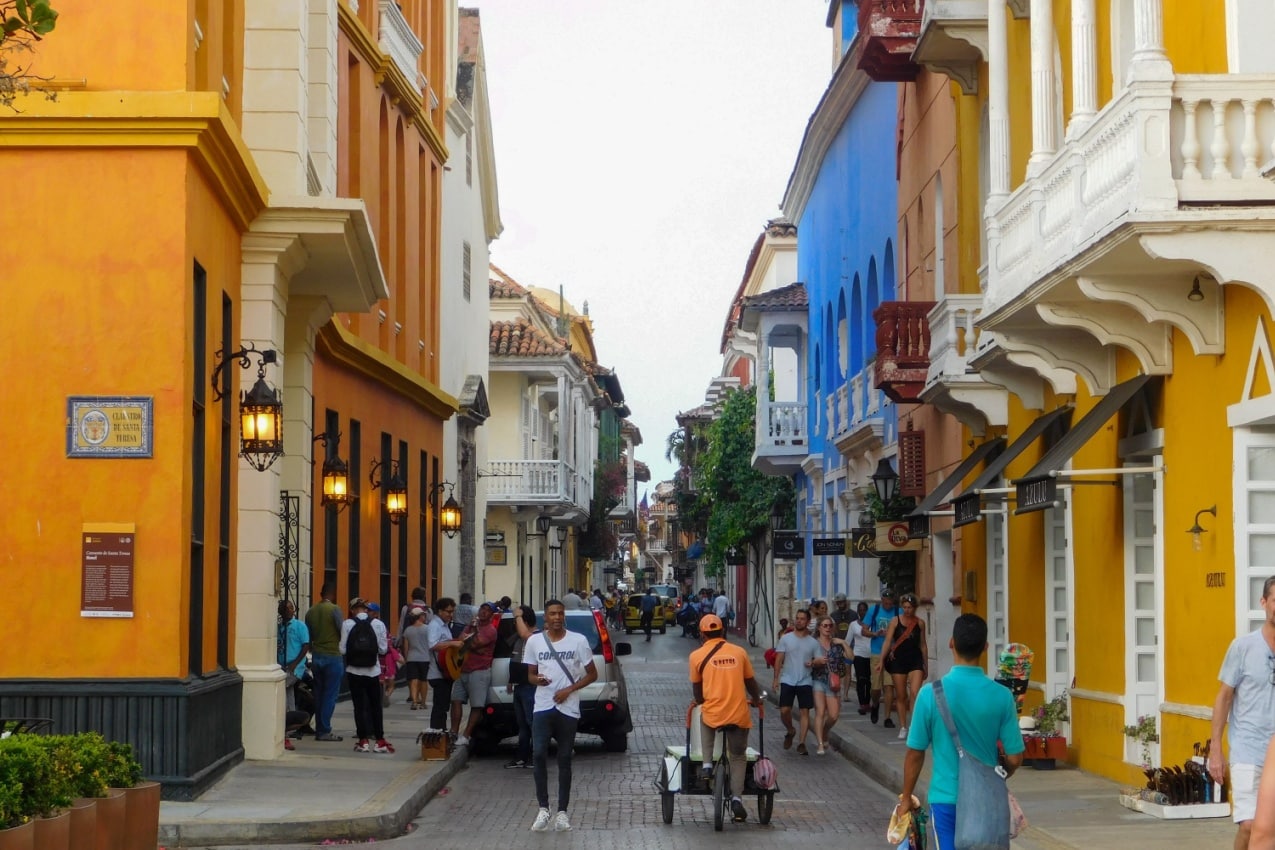
The best time to visit Cali is during the summer months from June to August.
Summer is Cali’s dry season, meaning you’ll get loads of sunshine without worrying about rain spoiling your plans. Plus, with longer days, you’ll have more time to explore the city and soak up the vibes.
During summer, Cali is in its shoulder season, which means fewer tourists compared to peak times. It’s the sweet spot—you’ll still get that lively atmosphere without the crowds, and you’ll likely snag better deals on flights and places to stay.
Just be ready for some serious heat! If you’re not into sweltering temperatures, you might prefer visiting during the peak months from December to March. But expect bigger crowds and higher prices. Or, if you want a calmer stay, consider visiting during the off-season in April-May or October-November—but bring an umbrella, as it may get a bit rainy.
How to Stay Safe in Cali
- The city center can be risky after dark, so it’s best to avoid it.
- If you’re planning to hike Tres Cruces, go with a group.
- For a safe stay, consider neighborhoods like Santa Monica, Ciudad Jardin, San Antonio, El Peñon, or Granada.
- If a police officer stops you randomly and asks to check your belongings or documents, request to go to a police station for verification. This precaution can help prevent falling victim to scammers posing as officers.
- Be wary of people handing out flyers or trying to sell you something. While you’re distracted, they or an accomplice might try to pick your pockets.
- Foreigners are sometimes targeted for overcharging, so it’s always a good idea to confirm prices before making any purchases
- When taking taxis, always have your door locked, and rely on GPS to ensure you’re taking the correct route.
- Leave valuables behind. Carry only essentials like a photocopy of your passport and money for the day.
- Never leave your drink unattended to avoid the risk of drink-spiking.
- Limit cell phone use in public.
- Stay informed about safety updates by reading local news from reliable sources and consider registering with the Smart Traveler Enrollment Program (STEP) for emergency assistance.
Useful Apps to Enhance Your Experience
- Rome2Rio: Lists all the options to travel from point A to point B, whether it’s buses, trains, or flights.
- BusBud: If you’re planning to travel by bus, you can use this app to compare different bus companies and book tickets hassle-free.
- Rappi: Need food, coffee, or groceries delivered? Order through Colombia’s trusted delivery service.
- GetYourGuide: Want to explore and find cool activities? This app is your go-to for tours, city walks, and more.
- Google Maps: Essential for navigation and finding your way around either by foot or local transport. You can even use it offline with downloaded maps.
- Uber: Looking for a ride? Uber’s usually cheaper than regular taxis and is widely available in Colombia.
- InDriver: Another option for rides, but here you get to negotiate the fare. You set the price, and the driver can accept or counteroffer. Handy for saving a few bucks.
Emergency Numbers
- National emergency number: 123
- Tourist Police: (1) 3374413
- Metropolitan Police: 112
- Fire Department: 119
- Medical Emergencies: 125
- Traffic Police: 127
- Toxicological Centre: 136
- Civil Defense: 144
- DAS (Security Department): 153
- DIJIN (Directorate of Judicial Police): 157
- GAULA (Kidnapping and Extortion Squad): 165
Enjoy Cali, But Remain Vigilant
Cali is far from being a danger zone like you see in the movies, but you should be more cautious here than usual—it’s Colombia, after all!
Petty crime is the main concern in Cali—but so it is in New York, Paris, and London—so take the same precautions you would in any major city! Secure your belongings, keep an eye on your surroundings, and be cautious in crowded areas. Whether you’re exploring Cali’s salsa clubs or wandering the streets, it pays to be vigilant.
Cali has its quirks, but it’s nothing you can’t handle with a bit of awareness and care. Safe travels!
